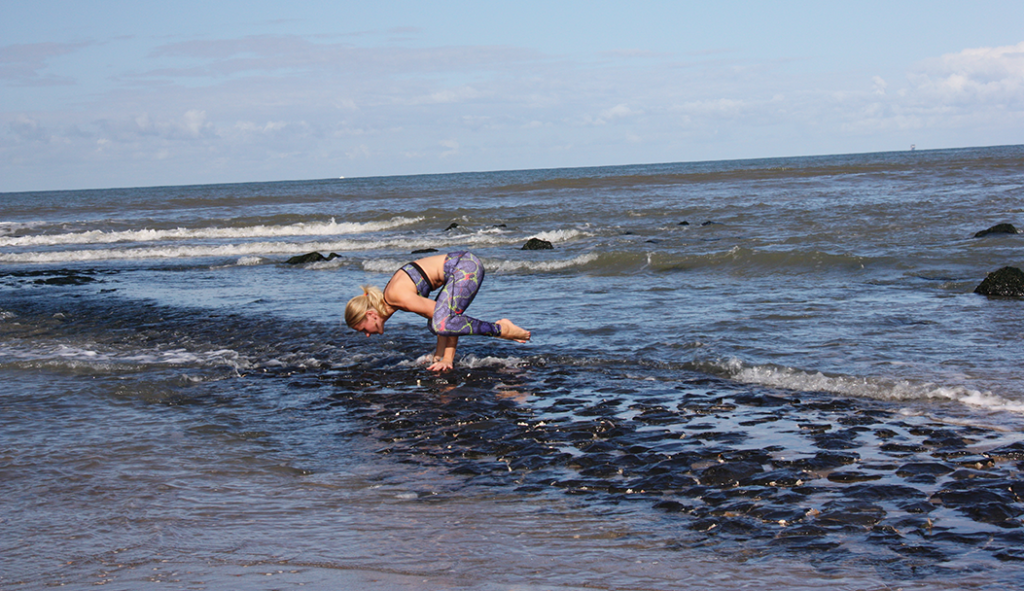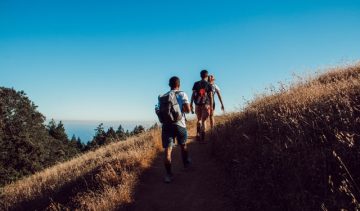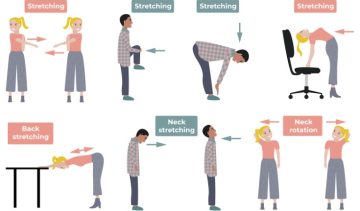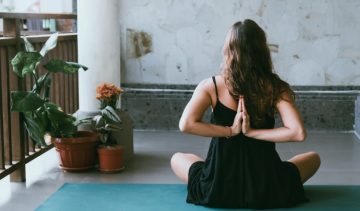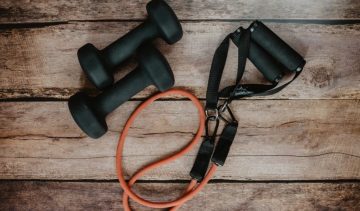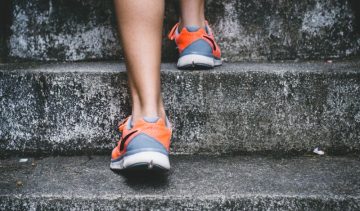If you look at the picture, you might think “No, I can never do this!” But nothing is further from the truth. By finding the right balance between the muscles and joints, everybody can succeed in this pose. And to be able to do that, precision is needed; bring your full attention to the pose. In this blog I will tell you more about the effect of the Crane pose and how you can do the pose with ease.
What is the Crane pose?
This is an advanced arm balance pose. In yoga jargon this pose is called “Bakasana”. Baka means crane. In this asana, the vertebrae, legs and arms are used in particular. In order to be able to make the bend with the back, the small lumbar muscle, the abdominal muscles and the pelvic floor are active. The neck muscles are also active to keep the neck stretched. The lumbar and hip muscles flex the hip joints and the hamstrings ensure that the knee flexion is maintained. In particular, the triceps work against gravity to remain in this asana. And also the muscles in the hand ensure that the bow of the hand can be maintained. In short, there are many muscles and joints simultaneously active in the Crane. The big challenge is not so much in the strength of the muscles as in finding enough focus to keep balance.
What is the effect of the Crane pose?
This asana mainly has a stretching effect on the body and specifically on the dorsal back muscles, neck muscles and the monkshap muscle. Regularly doing this asana reduces back pain, relaxes the hip joint and strengthens the triceps. By training these areas, it also improves the overall body posture. In order to remain in this pose, proper control of breathing plays a role. Because the thoracic part remains bent, respiratory movements in the rib cage are limited. Because the hip joint is tilted, breathing to the lower abdomen is difficult. When you breathe to the lower abdomen, you are more likely to lose stability. The upper part of the belly is free for breathing.
This is how you do the Crane pose
To do this asana it is good to start with the child pose as a warm-up. Then place your hands on the mat, in front of the body while squatting. Let the knees fall out. By having your hands flat on the mat and spreading the fingers, you will automatically be more stable. Slowly bring the weight forward on the hands and see how it feels. Then press your knees against your elbows. The elbows touches the inner part of your leg, against the knee. Bring your weight a little more forward and let your toes still rest on the mat. Bring the attention to your breathing and slowly lean forward and take the feet off the mat one by one.
Alternatives
In the crane the knees are placed against the triceps. On the picture you can see that I am not doing that. I pressed the legs against the elbows. This is a good alternative for when it doesn’t feel good to place the knees higher. It also makes it easier to experience what it takes to be able to balance in the Crane. Another alternative is to leave the feet (both or one) on the mat so that the muscles and joints have time to get used to the pose. When the body is stiff, this pose is a nice one to loosen it up. The more you practice it, the easier it becomes.
